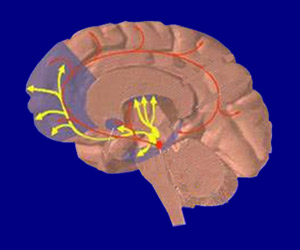- Tourette syndrome has for long been known to have a genetic basis
- Copy number variations in NRXN1 and CNTN6 were found to be significantly associated with Tourette syndrome
- These variations were found to increase the likelihood of developing Tourette syndrome
Dr. Paschou further stated that focusing on a single base pair mutation, which was the main building block of the genome, has now given way to broader approaches. The scientists examined the number of times a specific sequence of genes was repeated in the genome; these sequence variations are called copy number variations. The number of repetition of these sequences can have a direct effect on the health of an individual.
The sequences of DNA that are repeated could involve
- Large sections of the DNA sequence
- Complete genes
The research team from Purdue University scanned through the entire genome to identify the sequence that varied in numbers among patients with Tourette syndrome. This involved a lot of physical analysis and the entire genome had to be scanned.
Significance of the Study
The significance of this finding has been highlighted by Dr. Jeremiah Scharf, who is the co-senior author of the study and a professor at Massachusetts General Hospital’s Department of the Psychiatric & Neurodevelopmental Genetics Unit. The professor stated that their study was aimed at establishing that
- Tourette syndrome was not a simple single gene disorder
- There was a statistically stringent number of genes that were required to develop this condition
Tourette Syndrome
Tourette syndrome is a complex neurological disorder which is characterized by repetition of words or sounds by the affected individual. In a very small percentage of the people, it can lead to the repetition of obscene words.- Clearing of the throat
- Blinking of the eyes
- Involuntary phonic or tics
The condition is first identified between the ages 7 to 10, after which it takes a turn for severe. Sometimes the condition is characterized by sudden rage and anti-social behavior. The treatment for this condition is behavior therapy and there is no known cure.
The Genes under Study
2400 individuals with Tourette syndrome were included in the study with 4000 individuals analyzed in the control group.
The results of the study showed that Tourette syndrome was associated with
- Deletions in the NRXN1 gene
- Duplications in the CNTN6 gene
- In the study, one of the genetic variants was present in nearly 1 in 100 people with Tourette syndrome
The two genes have been associated with other neurological disorders but this is the first study that has found that copy number variations in these genes could lead to Tourette syndrome.
The current study provides an insight into the biology of the disease and further studies will reveal a better understanding of how this region of the brain develops. The study involved thousands of participants but the scientists associated with the study are planning on conducting an even larger study. This would provide further insoghts into the cause for the condition.
References:
- Researchers uncover genetic gains and losses in Tourette syndrome - (https://www.nih.gov/news-events/news-releases/researchers-uncover-genetic-gains-losses-tourette-syndrome)
- What is Tourette Syndrome? - (http://www.tourette.org.au/about-tsaa/what-is-tourette-syndrome/)










